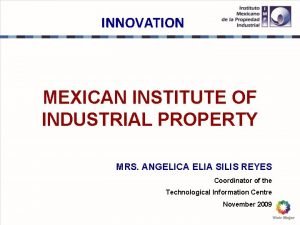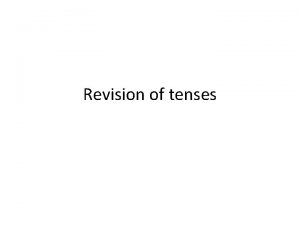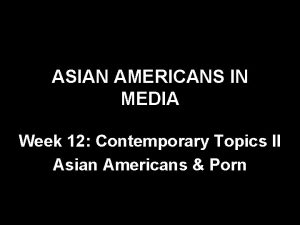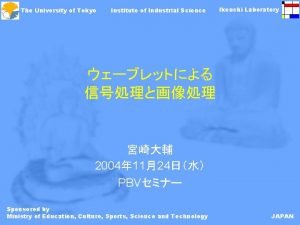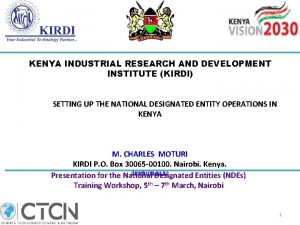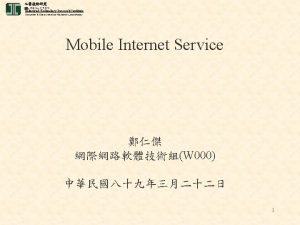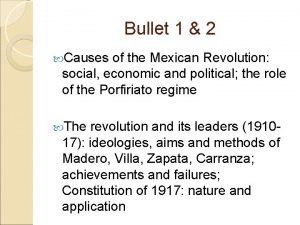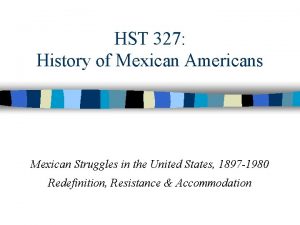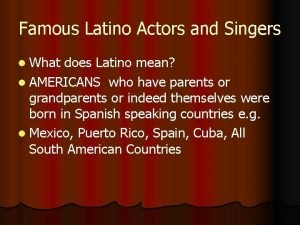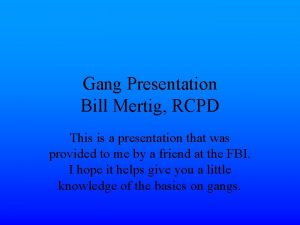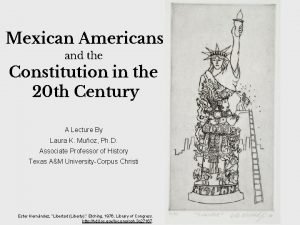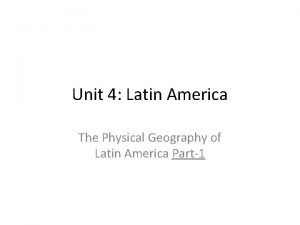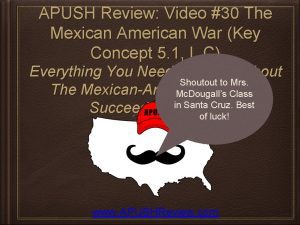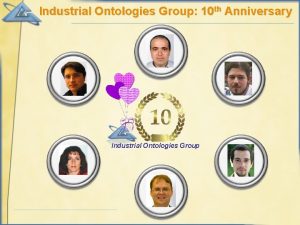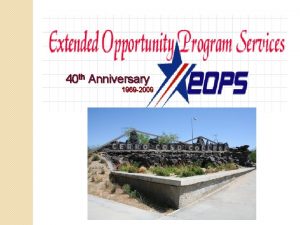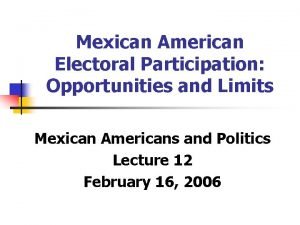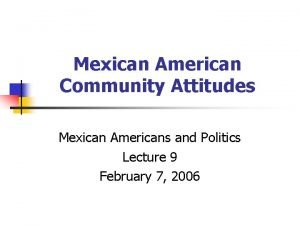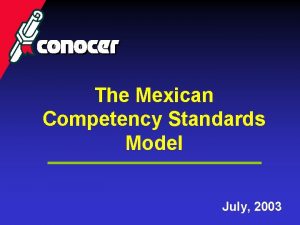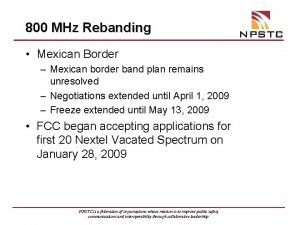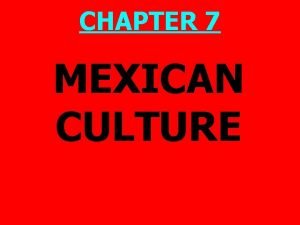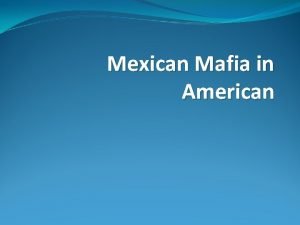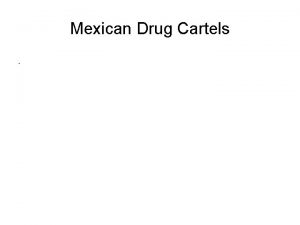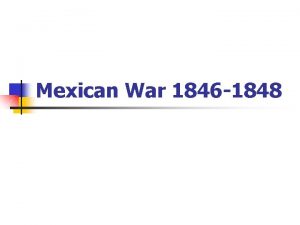XV Anniversary of the Mexican Institute of Industrial




















- Slides: 20

XV Anniversary of the Mexican Institute of Industrial Property International Seminar “Cutting-edge Issues of Industrial Property Mexico City, December 17, 2008 PATENT/TRADE SECRET COMPLEMENTARINESS: AN UNSUSPECTED SYNERGY Karl F. Jorda David Rines Professor of Intellectual Property Law Director, Kenneth J. Germeshausen Center for the Law of Innovation & Entrepreneurship Franklin Pierce Law Center Two White Street, Concord, NH 03301

I. Introduction In our knowledge-based high-tech era, it is important as a matter of intellectual property (IP) management policy and strategy to exploit the overlap between all IP categories, especially between patents, copyrights, and trade secrets, for dual or multiple protection. This results in synergistic integration and secures invulnerable exclusivity. 2

II. Integration of IPRs Professor Jay Dratler in his Intellectual Property Law treatise (1991) was the first one to “tie all the fields of IP together. ” According to him, from former fragmentation by specialties, Intellectual Property Rights (IPRs) are now a “seamless web, ” due to progress in technology and commerce. In 1997 the authors of Intellectual Property in the New Technological Age also “avoid the fragmented coverage…by approaching IP as a unified whole” and concentrate on the “interaction between different types of IPRs. ” 3

Integration of IPRs Thus we now have a unified theory in the IP world, a single field of law with subsets and significant overlap between IP fields. Several IPRs are available for the same IP or different aspects of the same IP. Not taking advantage of the overlap misses opportunities for clients or, worse, amounts to “malpractice, ” per Professor Dratler. For example: • A corporate chief IP counsel instructed me not even to mention trade secrets in a patent seminar for the corporation’s R&D staff. • forget about trade secrets. 4

CORPORATE PRACTICES ONLY TRADE SECRETS — NO PATENTS ONLY PATENTS — NO TRADE SECRETS PATENTS (FOR PRODUCTS) AND TRADE SECRETS (FOR MANUFACTURING PROCESSES) PATENTS AND TRADE SECRETS 5

Integration of IPRs Software — the best and most cogent illustration: Patents, copyrights and trade secrets are not incompatible but dovetail: the patents can protect patentable inventions or ideas, the copyrights can protect the expression of these ideas, and the trade secrets can cover the tons of collateral know-how. Because of the special character of software, sui generis protection, as was initially proposed and as exists for semiconductor chips, would be best suited. 6

Integration of IPRs Copyright Law does not require disclosure of trade secrets • Software code with trade secrets can be copyrighted • Trade secrets can be redacted from the submission of the code to the Copyright Office • Per Copyright Circular 61 promulgated pursuant to statutory provision — e. g. submitting only the first and last 25 pages with the trade secrets in the middle redacted out of the submission Hence, trade secret protection may be maintained even when the code is copyrighted Likewise, trade secret protection can exist with software patenting before filing, during pendency and even after issuance for all collateral information and know-how not disclosed in the patent specification 7

Integration of IPRs One IP category, often patents, may be the center of gravity and more important than others. Other IP categories are then supplementary but very valuable to • cover additional subject matter, • strengthen exclusivity, • invoke additional remedies in litigation, • standup if a primary IPR becomes invalid and thus provide synergy and optimize legal protection. The most important IP management and licensing policy and strategy is exploiting the overlap between patents and trade secrets. Illustrative and persuasive examples are: • GE’s industrial diamond process technology • Wyeth’s Premarin process • Pizza Hut decision 8

IP Integration Concepts EXPLOIT THE OVERLAP DEVELOP FALL BACK POSITION CREATE A WEB OF RIGHTS BUILD AN IP ESTATE OR PORTFOLIO BUILD A WALL BUILD A RINGFENCE (INDIA) OVERPROTECT LAY A MINEFIELD for SYNERGISTIC EFFECT via DUAL OR MULTIPLE PROTECTION 9

Definition Of “Trade Secret” 1. A trade secret may consist of any formula, pattern, device or compilation of information which is used in one’s business, and which gives him an opportunity to obtain an advantage over competitors who do not know or use it. It may be a formula for a chemical compound, a process of manufacturing, treating or preserving materials, a pattern for a machine or other device, or a list of customers. (Restatement of Torts, § 757 comment b (1939)) 2. A trade secret is any information, including a formula, pattern, compilation, device, method, technique, or process, that: (i) derives independent economic value, actual or potential, from not being generally known to, and not being readily ascertainable by proper means by, other persons who can obtain economic value from its disclosure or use, and (ii) is the subject of efforts that are reasonable under the circumstances to maintain its secrecy. (Unif. Trade Secrets Act § l(4), 14 U. L. A. 372 (1985 & Supp. 1989) 3. A trade secret is any information that can be used in the operation of a business or other enterprise and that is sufficiently valuable and secret to afford an actual or potential economic advantage over others. (Restatement (Third) of Unfair Competition, § 39 (1995)) 10

TRIPS Definition Natural and legal persons shall have the possibility of preventing information lawfully within their control from being disclosed to, acquired by, or used by others without their consent in a manner contrary to honest commercial practices so long as such information: (a) Is secret in the sense that it is not, as a body or in the precise configuration and assembly of its components, generally known among or readily accessible to persons within the circles that normally deal with the kinds of information in question; (b) Has commercial value because it is secret; and (c) Has been subject to reasonable steps under the circumstances, but the person lawfully in control of the information, to keep it secret. (TRIPS Agreement, Part II, Sect. 7: Protection of Undisclosed Information, Art. 39, Par. 2, 1994) 11

Definition Of Know-how. The knowledge and skill required to do something correctly. (Dictionary Definition) Know-how. Information that enables one to accomplish a particular task or to operate a particular device or process. Not a legal term of art. (Mc. Carthy’s Desk Encyclopedia of Intellectual Property, Second Edition, p. 236) Know-how is knowledge and experience of a technical, commercial, administrative, financial or other nature, which is practically applicable in the operation of an enterprise or the practice of a profession. (AIPPI Resolution – Mexico Congress – 1973) Hence, the terms trade secrets and know-how are not synonyms. Secrecy is the most important criterion for trade secrets — a sine qua non. 12

III. Patent/Trade Secret Complementariness • Supreme Court (Kewanee Oil, 1974): perfectly viable alternatives. • Not mutually exclusive but mutually reinforcing — dovetail, in harmony • “Coexistence is well-established. ” (Don Chisum). • Inextricably intertwined: Most R&D data and collateral knowhow cannot and need not be included in patent applications — grist for trade secrets. • All patents are born as trade secrets. Trade secrets precede, accompany and follow patents. • Tom Arnold: it’s “flat wrong” to assume that “because the patent law requires a best mode requirement, patents necessarily disclose or preempt all the trade secrets that are useful in the practice of the invention. ” 13

Patent/Trade Secret Complementariness 1. In the critical R&D state and before any patents issue, trade secret law “dovetails” with patent law. (Bonito Boats) 2. Assuming that a development has been enabled and the best mode described, all associated, collateral know-how not disclosed, whether or not inventive, can be retained as a trade secret. 3. All R&D data, including data pertaining to better modes, developed after filing, again whether or not inventive, can also be protected as trade secrets. 4. With respect to technologically complex developments consisting of many patentable inventions and volumes of associated know-how, complementary patenting and secreting is tantamount to having the best of both worlds. E. g. GE’s industrial diamond process technology. The question then is not whether to patent or to padlock but rather what to patent and what to keep a trade secret and whether it is best to patent as well as to padlock. Best policy and strategy is to patent as well as to padlock. 14

Patent/Trade Secret Complementariness Best Operational Practice Patents and trade secrets dovetail — exploit overlap and obtain dual protection, as follows: • • 15 File broad application or several applications simultaneously or sequentially as early as possible Time-honored maxim: “file early, file often”. “It is better to be a first applicant than a first inventor. ” This is not necessarily a decision in favor of patenting — gains time, keeps options open. Pending applications are secret. If allowed, decide to take out or abandon and keep secret. If not allowed and not published, have trade secrecy. Continue filing on patentable improvements throughout R&D stage and beyond. E. g. over 100 patents on a Pitney Bowes mail processor — a “simple machine. ” Go for big numbers, e. g. IBM. Above all, keep the volumes of collateral know-how secret.

Pitney Bowes Mail Processor “Simple Machine” with over 100 Patents 16

Patent/Trade Secret Complementariness As a practical matter, licenses under patents without access to associated, collateral know -how are often not enough because patents rarely disclose the ultimate scaled-up commercial embodiments of products and processes. “It is common practice in industry to seek and obtain patents on that part of a technology that is amenable to patent protection, while maintaining related technological data and other information in confidence. ” (Peter Rosenberg). “With few exceptions, patents needed to practice licensed technology should be licensed along with the TI (technical information). The combination of TI and patents is more valuable than either alone and thus the licensor will be able to obtain additional compensation. ” (Martin Landis). “Trade secrets are a component of almost every technology license…(and) can increase the value of a license up to 3 to 10 times the value of the deal if no trade secrets are involved. ” (Melvin Jager). 17

IV. Exemplary Trade Secret Cases 1. GE’s exclusive industrial diamond process technology • Held patents (some expired) and trade secrets • Refused to grant licenses • Fast-track GE scientist stole trade secrets for Far Eastern interests for million dollar payments • In the end got caught, tried, jailed 2. Wyeth’s exclusive Premarin manufacturing process • Had market exclusivity since 1942 • Patents expired decades ago • Closely guarded its trade secrets • Natural Biologics stole these trade secrets • Wyeth sued, got sweeping injunction 18

Exemplary Trade Secret Cases 3. Pizza Hut case • Pizza Hut supplier, C&F Packing, invented and patented a manufacturing process for pizza sausage toppings and kept improvements secret • Pizza Hut misappropriated trade secrets and got sued • Court decisions: 1. On summary judgment: Patents are invalid on on-sale bar grounds 2. After trial: Trade secrets are enforceable and Pizza Hut had to pay $10. 9 million 19

V. Conclusion To summarize, patents and trade secrets are viable alternative modes of protection in the IP field. It is patents and (not “or”) trade secrets, because they can and should be relied upon at the same time and side by side to protect any given invention or innovation. Far from being irreconcilable, they in fact make for a happy marriage with patents protecting patentable inventions, and trade secrets protecting the volumes of collateral know-how. Thus a policy and practice of utilizing both routes for optimal protection and invulnerable exclusivity is rational, practical and profitable. SEE: JORDA ON TRADE SECRETS — THE INTERFACE BETWEEN PATENTS AND TRADE SECRETS — http: //blogs. piercelaw. edu/tradesecrets 20
 Mexican institute of industrial property
Mexican institute of industrial property Today is liz and john's thirtieth wedding anniversary
Today is liz and john's thirtieth wedding anniversary Edo period technology
Edo period technology Plmar hymn
Plmar hymn Porn
Porn Institute of industrial science the university of tokyo
Institute of industrial science the university of tokyo Kenya industrial research and development institute
Kenya industrial research and development institute Communication research
Communication research What were the causes of the mexican revolution
What were the causes of the mexican revolution Mexican hst
Mexican hst Rico tex mex
Rico tex mex Famous latino actor
Famous latino actor A mexican jumping bean jumps with the aid
A mexican jumping bean jumps with the aid Pakistani mexican wedding
Pakistani mexican wedding Sureños 13 rules
Sureños 13 rules Affirmative i
Affirmative i Mexican crops
Mexican crops Delgado v bastrop
Delgado v bastrop Where is the mexican plateau
Where is the mexican plateau Battle of buena vista apush
Battle of buena vista apush Why did settlers in texas rebel against mexican rule?
Why did settlers in texas rebel against mexican rule?
